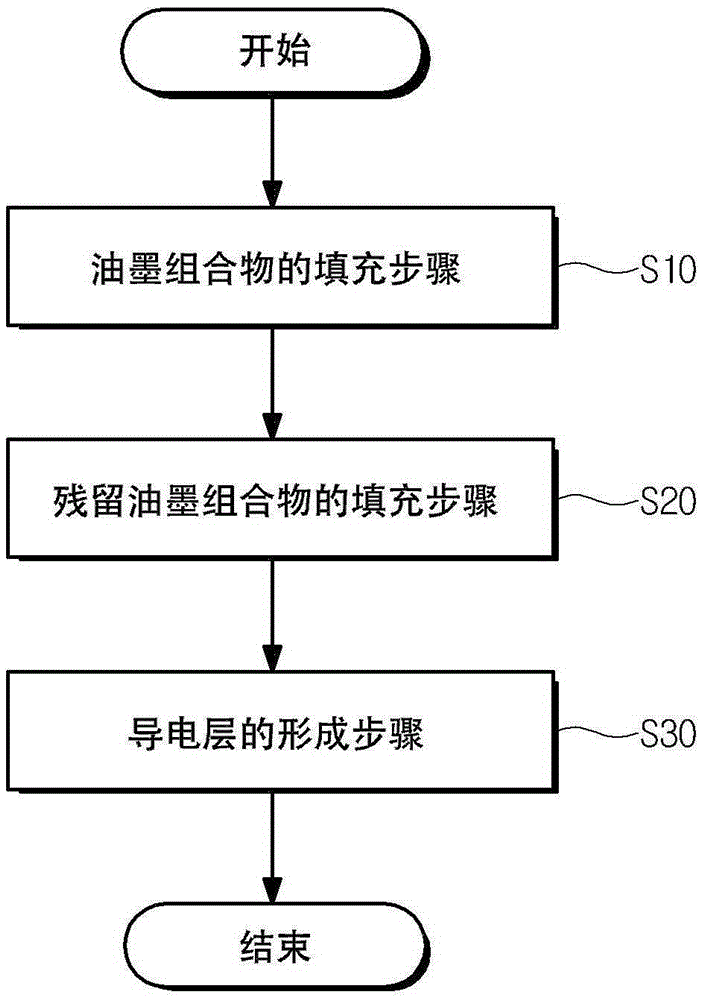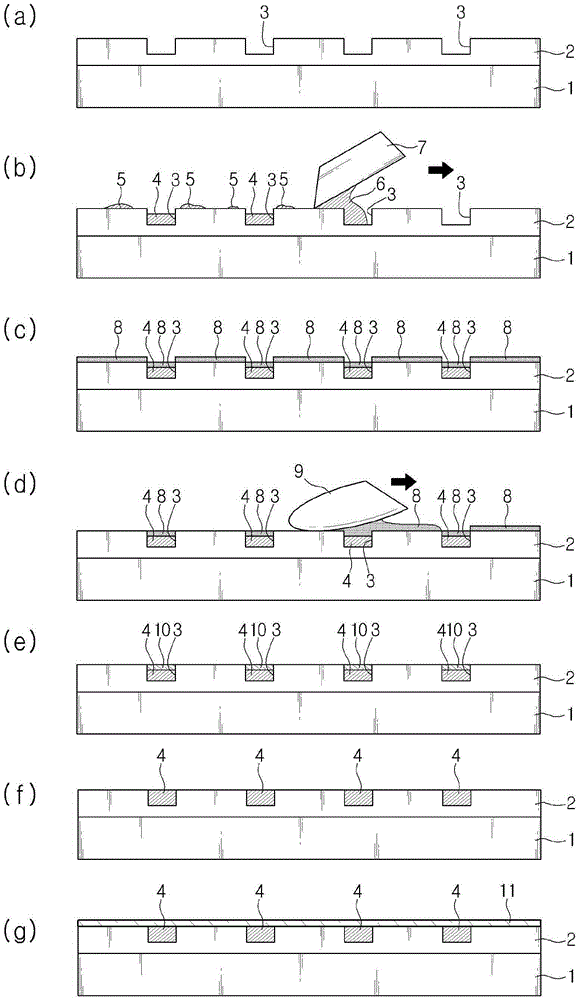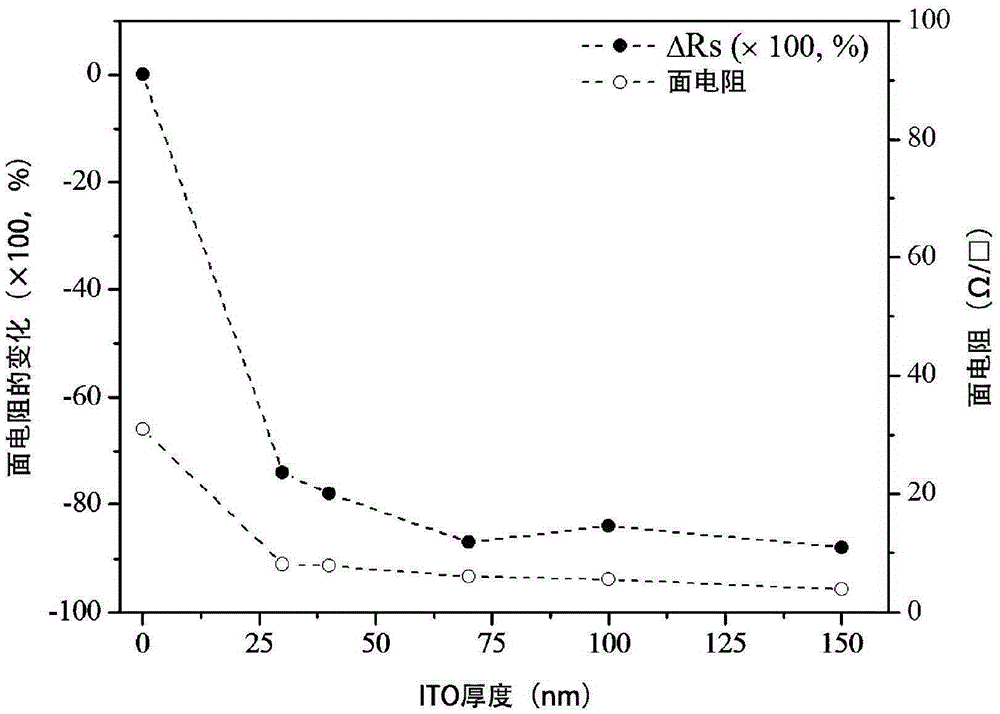Method for manufacturing hybrid transparent electrode and hybrid transparent electrode
A technology of transparent electrodes and manufacturing methods, applied in cable/conductor manufacturing, replication/marking methods, conductive materials dispersed in non-conductive inorganic materials, etc. Energy barrier and other problems, to achieve the effect of excellent interface characteristics, high conductivity, and excellent conductivity
- Summary
- Abstract
- Description
- Claims
- Application Information
AI Technical Summary
Problems solved by technology
Method used
Image
Examples
preparation example Construction
[0085] Conventional methods for preparing metal nanoparticles include a physical method of pulverizing metal lumps and a chemical method. Further details of the chemical method include: aerosol method of spraying high-pressure gas to make powder, pyrolysis method of using metal compound and gas reducing agent to make powder by pyrolysis, heating and evaporating raw materials Evaporation concentration method, sol-gel method, hydrothermal synthesis method, ultrasonic synthesis method, microemulsion method and liquid phase reduction method to make powder.
[0086] The most commonly used is the liquid phase reduction method, which utilizes a dispersant and a reducing agent to prepare, which is easy to control the formation of nanoparticles, and is evaluated as the method with the best economic effect, but in the present invention, as long as nanoparticles can be formed, All methods can be used.
[0087] For a specific description of the method for preparing nanoparticles by the l...
preparation example 1
[0158] Mix 27.98 g of conductive paste (prepared by Yin Ke De Co., Ltd.) and 0.45 g of terpineol (terpineol) in 1.57 g of ink (produced by Yin Ke De Co., Ltd.) for coating, and utilize a slurry mixer (Dahua Technology Co., Ltd.) ) was stirred at 1000 rpm for six minutes to prepare a conductive ink composition.
preparation example 2
[0160] After adding 10.0 g of isobutyl carbamate, 85.5 g of isobutylamine, and 2.0 g of a 95% solution of 2-amino-2-methyl-1 propanol, 2.5 g of hydrogen peroxide was added slowly, followed by stirring for five minutes to prepare etchant.
PUM
| Property | Measurement | Unit |
|---|---|---|
| Thickness | aaaaa | aaaaa |
| Thickness | aaaaa | aaaaa |
| Surface roughness | aaaaa | aaaaa |
Abstract
Description
Claims
Application Information
 Login to View More
Login to View More - R&D
- Intellectual Property
- Life Sciences
- Materials
- Tech Scout
- Unparalleled Data Quality
- Higher Quality Content
- 60% Fewer Hallucinations
Browse by: Latest US Patents, China's latest patents, Technical Efficacy Thesaurus, Application Domain, Technology Topic, Popular Technical Reports.
© 2025 PatSnap. All rights reserved.Legal|Privacy policy|Modern Slavery Act Transparency Statement|Sitemap|About US| Contact US: help@patsnap.com



